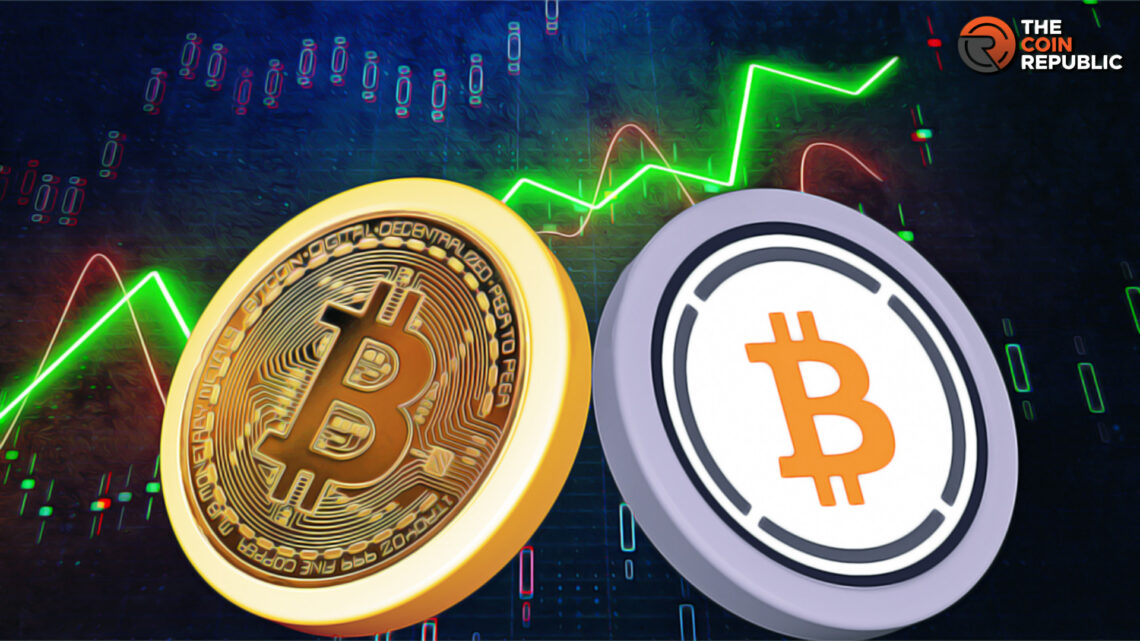- 1 Wrapped Bitcoin is one of the scalability-focused solutions that make BTC compatible with DeFi.
- 2 This solution brings many other possibilities with unique features and creates a distinct ecosystem.
Cryptocurrency is a revolution and it transforms the way the world deals with money. Not only does it become a potential alternative for traditional currencies, but it also empowers every entity that deals with it. However, the world is still far from benefiting from it to the fullest extent. That’s because Bitcoin and all other cryptos are not very scalable. They aren’t fit for mass adoption in businesses and marketplaces.
Crypto experts know this very well and have been working on this aspect for some time. So far, the crypto space has seen quite a few solutions that increase the assets’ scalability. One of them is the wrapped version of cryptocurrencies. This particular asset class ensures faster transactions at a lesser cost.
Due to obvious reasons, it has received a great response within crypto circles. However, implementation of this technology is not that easy. It takes expertise, resources, and lots of time for the developers to roll out a solution on a large scale. For crypto users, it’s very important to understand the concept of wrapped cryptos. So, let’s dive right into these assets that offer many possibilities.
Understanding Wrapped Cryptos
Wrapped cryptos secure their value against real-world assets like gold, real estate, stocks, etc. Apart from that, they become perfectly viable for the DeFi environment. They are called wrapped because of their compressed size. Users of non-wrapped tokens can keep their holdings in a digital vault.
One of its biggest highlights is the interoperability which regular cryptos lack. The holders of wrapped tokens can use them on any blockchain network without any additional tools. Moreover, the wrapped coins can represent a wide range of real-world items. Since they’re secured with real-world things, their security becomes a pivotal aspect.
Mostly, wrapped assets are stored and managed by a custodian entity. Wrapped Bitcoin is one specific crypto that has been talked about a lot. Since they are interoperable, a WBTC can easily work on the Ethereum blockchain. Other than Bitcoin, the other popular networks for developing wrapped tokens are Binance Smart Chain BEP-20 and Binance Smart Chain (BEP-20).
Subtleties, Variations, & Mechanism
The existence of multiple blockchain networks creates a complex system for crypto interoperability. For example, ETH is not compliant with Ethereum or ERC-20 tokens. Thus, Ethereum needs to be wrapped to serve the same purpose as wBTC. Furthermore, other blockchain networks have started developing their own wrapped assets.
Solana, Cardano, and Polkadot are trying to introduce wrapped versions to facilitate access to DeFi applications. Some new blockchain protocols have also joined the fray and are working on their wrapped tokens.
For instance, bLuna is a wrapped Luna token that operates on the Terra network. It’s a price-stable token that can be used as collateral. Many people believe that wrapped tokens are a type of stablecoin. That’s probably because they are both pegged against real-world assets. Still, it should be noted that a stablecoin is secured only against the US dollar.
On the other hand, wrapped tokens cover a wide range of assets. In addition, they come in two types of variations, which are redeemable and cash-settled. As the names make it clear, cash-settled tokens are only settled with fiat currency. On the other hand, the redeemable assets are redeemed only against an underlying asset.
Insights into Wrapped Bitcoin
Wrapped Bitcoin was launched in January 2019 with the aim of bringing greater flexibility and liquidity. It made the blockchain compatible with decentralized finance and its applications. By design, a wrapped BTC replaces the original asset and transacts within the DeFi ecosystem. It works seamlessly with the Ethereum network and brings new possibilities.
A holder of BTC can lend it through smart contracts and also gain interests on it. This was never possible with the original crypto that still lacks interoperable traits. wBTC establishes a new kind of ecosystem in which investors and lenders can enjoy enhanced income potential.
The Decentralized Autonomous Organization (DAO) plays a significant role in keeping the wBTC functional. It works with a multi-sig (multi-signature) signature contract to add or remove wBTC merchants and custodians. In this environment, the merchants are administrators who manage the minting process. They assess the investors’ and traders’ demands and tweak the process according to them.
The custodians are vaults that make wBTC safer and more reliable. They authenticate all the tokens with on-chain proof of reserves. From the perspective of safety, the wrapped BTC satisfies users to a large extent. However, they are not devoid of flaws. A major red flag is that users need to trust a third-party custodian to safeguard their assets.
Upshot
Wrapped Bitcoin has emerged as a promising investment for many investors. In a very short span of time, the market has registered a sizable volume of BTC being converted into wBTC. According to a report, the overall value of such transactions is over $800 million. Thus, it won’t be wrong to say that wrapped tokens have a bright future. However, only time can tell if these solutions will continue their ascension or not.

Steefan George is a crypto and blockchain enthusiast, with a remarkable grasp on market and technology. Having a graduate degree in computer science and an MBA in BFSI, he is an excellent technology writer at The Coin Republic. He is passionate about getting a billion of the human population onto Web3. His principle is to write like “explaining to a 6-year old”, so that a layman can learn the potential of, and get benefitted from this revolutionary technology.


 Home
Home News
News










